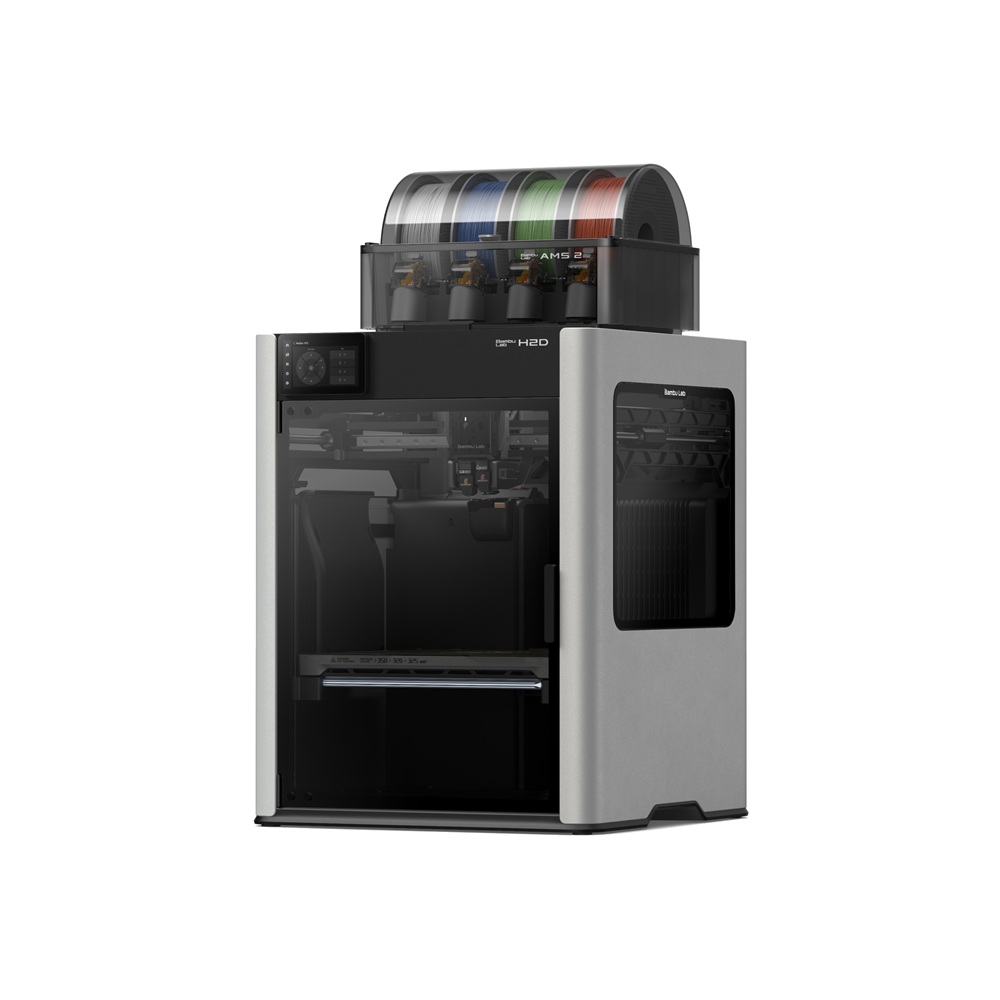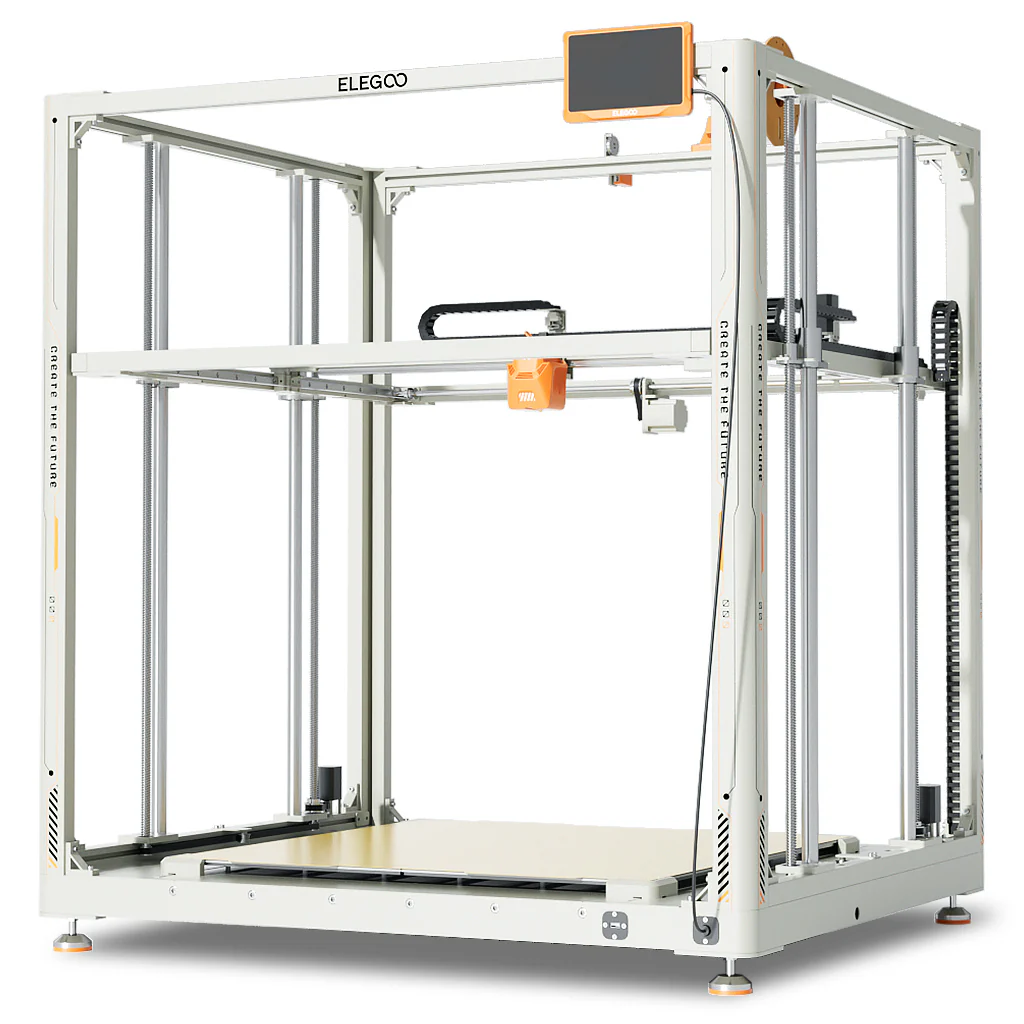Compare H2D vs Orange Storm Giga
Comparison between the best 3D printers
Choose the best 3D printer at the best price. The cheapest 3D printers are here.
Buy a 3D printer here with 3D Fila.
 |
 |
|
| Model | H2D |
Orange Storm Giga[BUY Orange Storm Giga] |
| Printing Material | Filament | Filament |
| Buy Filament for Bambu Lab H2D | Buy Filament forElegoo Orange Storm Giga | |
| Estimated price | $1899,00 | $2500,00 |
| Manufacturer | Bambu Lab | Elegoo |
| Release Year | 2025 | 2024 |
| Print Volume [mm] | 350x320x325 | 800x800x1000 |
| Printer Size [mm] | 492x514x626 | 1000x1000x1200 |
| Weight [kg] | 42,3 | 136 |
| Power Loss Recovery | YES | YES |
| Enclosed printer | YES | NO |
| Bed Leveling | Automatic | Automatic |
| Filament End Sensor | YES | YES |
| Bed type | Heated | Heated |
| Power supply system | Direct Drive | Direct Drive |
| Standard nozzle | 0,4 | 0,4 |
| Maximum Nozzle Temperature [°C] | 350 | 300 |
| Maximum Bed Temperature [°C] | 120 | 90 |
| Maximum printing speed [mm/s] | 600 | 300 |
| Filament holder | YES | YES |
| Camera for supervision | YES | YES |
| Recommended filaments | PLA, PETG, ABS, ASA, TPU, PVA, Nylon (PA) | PLA, ABS< PETG, TPU |
| Recommended slicers | Bambu Studio | Elegoo Cura |
| Maximum Resolution [mm] | 0,01 | 0,1 |
| Processor | ||
| Display | Touchscreen 5'' | Touchscreen 7'' |
| Power Supply | ||
| Connectivity | Wifi, Bambu bus, Cartão SD | USB, LAN, Wi-Fi |
| Operating systems | Windows, Mac, Linux | Windows, Linux e Macbook |
| Date of registration in the system | 2025-03-31 | 2024-10-09 |
| Release date | 2025 | 2024 |
| Extra features | Bambu Labs H2D combines high-speed 3D printing with a chamber heated up to 65 °C, dual extrusion with automatic nozzle switching, an AMS for filament drying and exchange, and AI sensors that detect failures. It offers optional laser and digital cutting capabilities, features intelligent calibration through computer vision, vibration control, enhanced fire safety, and real-time camera monitoring. | The Elegoo Orange Storm Giga stands out for its huge print volume of 800 x 800 x 1000 mm and its modular heated bed system with four independent zones, ensuring energy efficiency. It supports printing with multiple nozzles, allows print recovery after power failures and uses Klipper firmware, optimizing speed and quality. The portable 7-inch touchscreen and USB, Wi-Fi and LAN connectivity make operation more accessible and versatile. |
| Support for multiple colors and materials (AMS and CFS) | YES | NO |
Notes * |
||
| Cost-benefit | 7 / 10 | 6 / 10 |
| Hardware | 8 / 10 | 3.6 / 10 |
| Tela | . | . |
| Print volume | 4 / 10 | 10 / 10 |
| Performance | 5 / 10 | 3 / 10 |
| [BUY Orange Storm Giga] |
Conclusion |
| In conclusion, when comparing the Bambu Lab H2D and the Elegoo Orange Storm Giga, both printers offer unique advantages tailored to different user needs and preferences. The H2D, priced lower, delivers high-speed printing with advanced features like dual extrusion, intelligent calibration, and enhanced safety measures, making it a compelling choice for users seeking quality and performance in a more compact design. Its capability for multiple materials and colors, along with a small footprint, caters well to hobbyists and professionals who prioritize versatility and innovation in a smaller workspace. On the other hand, the Orange Storm Giga, while carrying a higher price tag, excels in print volume and modularity. Its vast build space allows for larger projects, which can be a significant advantage for users in industries that require scale. Although it includes fewer high-end features compared to the H2D, the Giga's energy-efficient design and ease of connectivity contribute to its appeal, particularly for those focused on large-scale production. Ultimately, the choice between the two comes down to the specific needs of the user: if speed, compactness, and cutting-edge features are a priority, the H2D is a solid investment. Conversely, for those needing high volume and modular capabilities, the Orange Storm Giga represents a worthwhile option despite its higher cost. Both printers have their strengths, ensuring that users can find a suitable model that aligns with their printing projects and budget considerations. |

